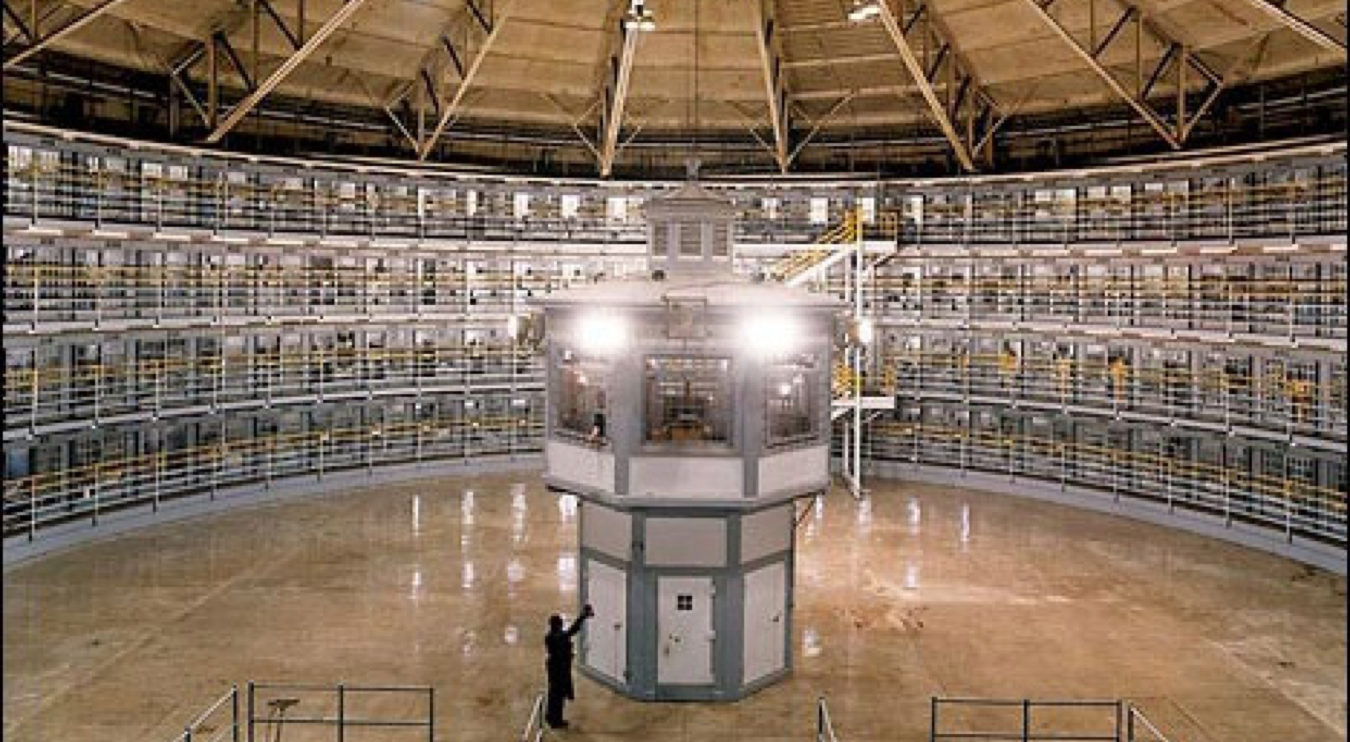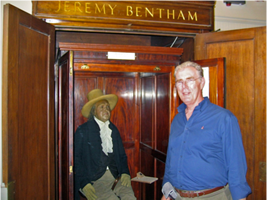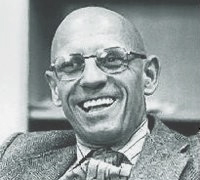The Panopticon
Jeremy Bentham, the founder of utilitarianism, introduced his plan for a model prison: The Panopticon. a structure that allows guards to see everything and prisoners to see nothing. It provided, in Bentham's eyes, the most cost-effective way of keeping an eye on prisoners, with the advantage that prisoners never knew exactly when they were under surveillance.
Panopticon. a structure that allows guards to see everything and prisoners to see nothing. It provided, in Bentham's eyes, the most cost-effective way of keeping an eye on prisoners, with the advantage that prisoners never knew exactly when they were under surveillance.
Far before any surveillance technology allowed from group surveillance, Bentham’s design allowed a single individual to observe many prisoners—and yet remain unobserved himself. Moreover, the prisoners could not see one another because of dividing panels between cells.
In fact, because the observation booth was shrouded in darkness, the guard might not even be present!
![]()
The French philosopher, Michel Foucault (1926-1984) became one of the most significant commentators on punishment and discipline in contemporary society, and he was a thoughtful and insightful commentator on Bentham’s Panopticon.
In the United States, supermax prisons have often on the design of Bentham's Panopticon: Prisons are typically under surveillance 24 hours a day (or at least they can never be certain when they are not being surveilled) and they are unable to see those who are observing them--nor, in most cases, can they observe one another.

Built in 1927, Stateville Correctional Facility included four towers that were explicitly modeled on Bentham’s Panopticon.
One of these towers still exists today and was used to house high security inmates.
The design of the panopticon is such that prisons cannot see the guard, but the guard can see all of them.
![]()
The image of the panopticon has become a symbol for life in the surveillance state, one in which the average citizen is potentially under surveillance 24/7.

 In addition to covering all the standard topics, this book was, I think, the first in which an ethical theory book to consider Islam, the Navajo religion, and Buddhism. It was one of the earliest with a sympathetic discussion of the ethics of diversity, a topic now spanning two chapters. The concluding chapter is devotedto applying ethical theories to abortion, euthanasia, and the death penalty.
In addition to covering all the standard topics, this book was, I think, the first in which an ethical theory book to consider Islam, the Navajo religion, and Buddhism. It was one of the earliest with a sympathetic discussion of the ethics of diversity, a topic now spanning two chapters. The concluding chapter is devotedto applying ethical theories to abortion, euthanasia, and the death penalty.


